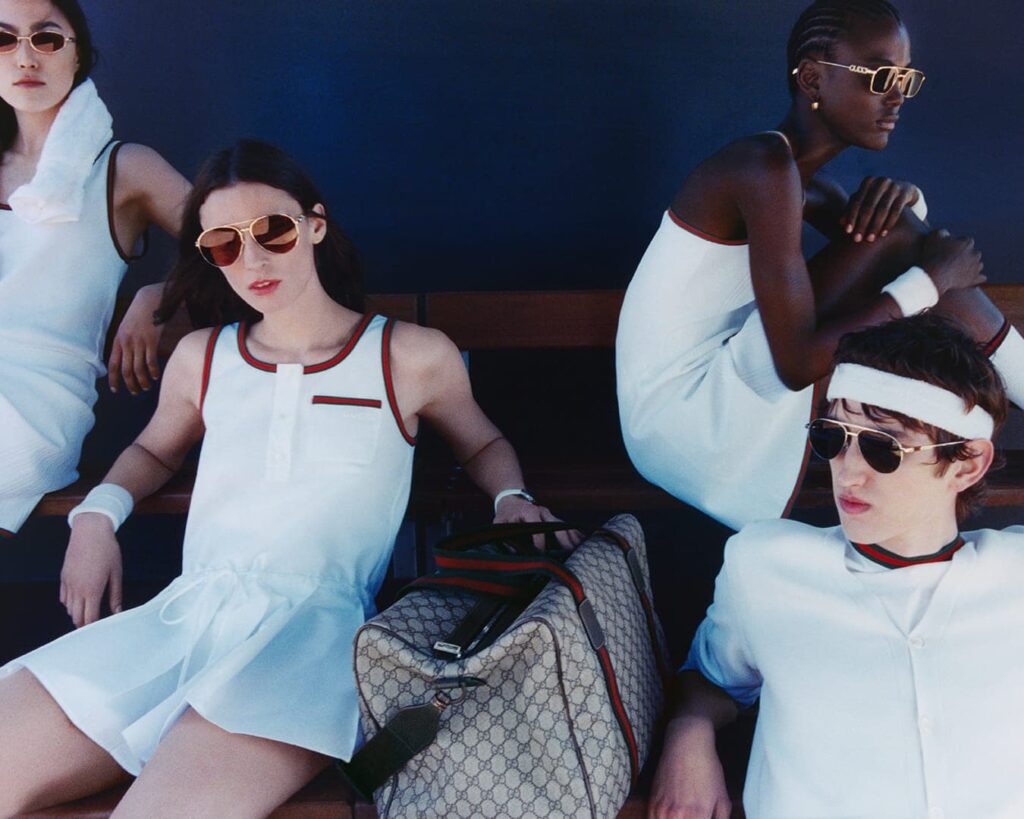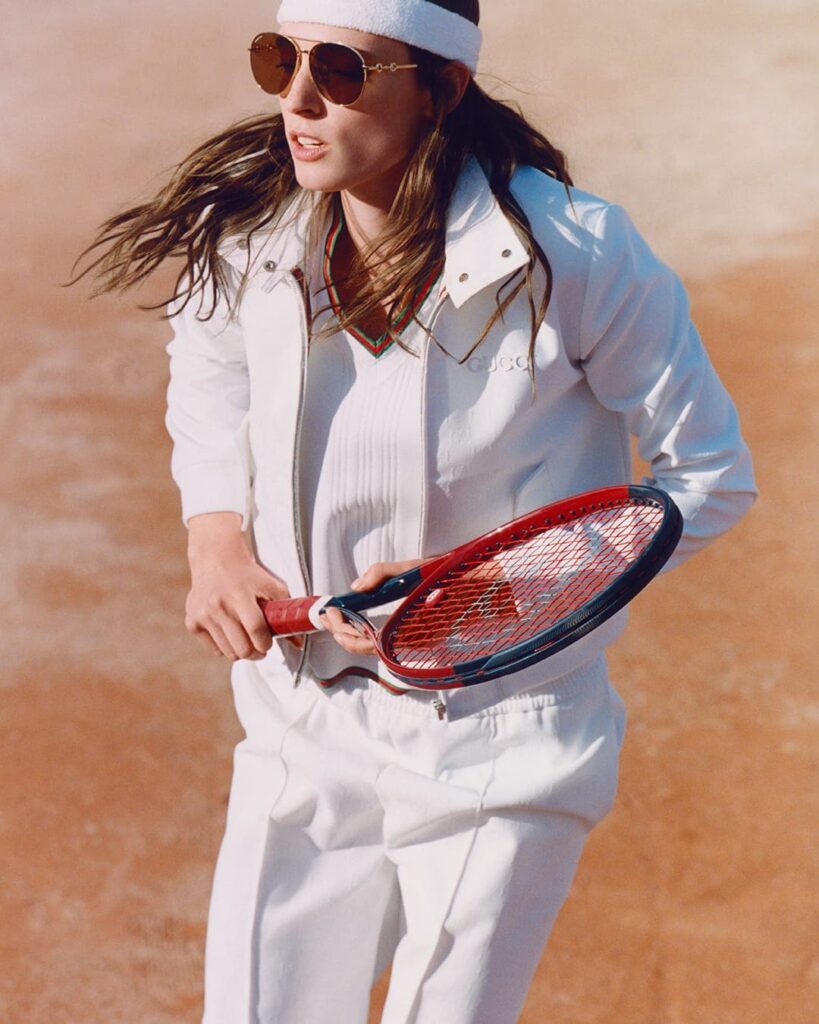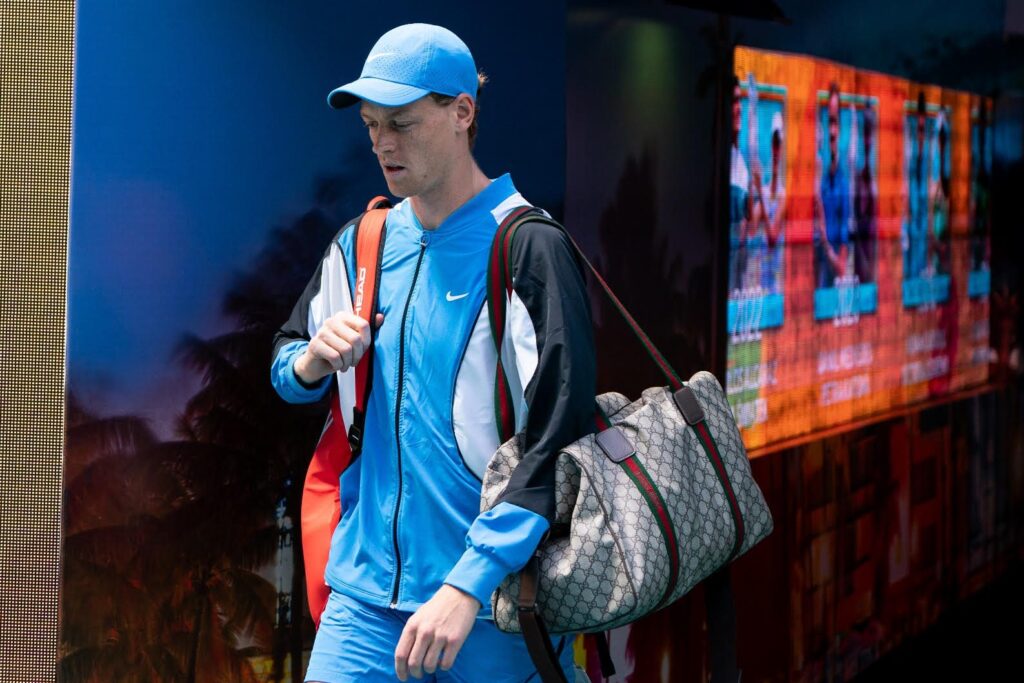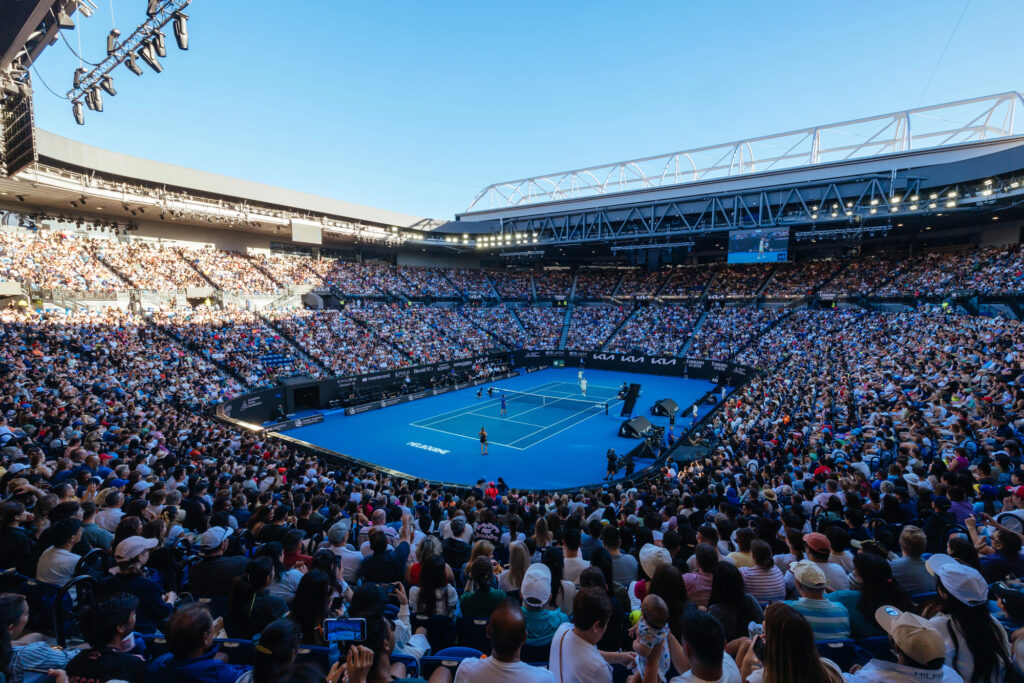Gucci in tennis: a distinctive style statement beyond competition
While sportswear often emphasizes performance and ambition, Gucci offers a different perspective: sport not as competition, but as part of a daily ritual.
The brand doesn’t ignore functionality — it reframes it through the lens of style, aesthetics, and cultural context. Let’s revisit some of Gucci’s most notable tennis collaborations in recent years.
In 2024, the Italian fashion house unveiled its Gucci Tennis capsule collection, reimagining the aesthetics of 1970s tennis — with pleated skirts, polo shirts with contrasting collars, and retro accessories.

Rather than replicate the past, Gucci’s designers filtered the era’s visual codes through a modern lens, placing emphasis on comfort, functionality, and recognizability.
“Our goal isn’t just to reinvent what we made in the ’70s,” Gucci notes, “but to give it new life within a contemporary lifestyle.”
A highlight of the collection was Gucci’s partnership with HEAD. Together, they released a limited-edition Speed MP racket, merging HEAD’s performance engineering with Gucci’s design language: a signature ribbon on the frame, Interlocking G emblem on the strings, and bold red stringing.

The racket is performance-ready, featuring an anti-vibration dampener and balanced weight for ideal control and power. It’s accompanied by a blue zippered case with adjustable strap — turning training gear into a statement piece.
For each major tournament, Gucci also crafts a new duffle bag for world No. 1 and global brand ambassador Jannik Sinner.
For Roland-Garros 2025, the brand took it further — teaming up again with HEAD to create an all-white leather bag, detailed with Gucci’s iconic Web stripe (green-red-green) along the strap and finished with a minimalist Gucci × HEAD logo.

Gucci also made waves through a collaboration with Adidas. Their 2022 vintage tennis capsule blurred the line between court and streetwear. Standout pieces included updated Adidas Gazelle sneakers with GG monogramming, Gucci Horsebit loafers, and the 1955 bag adorned with Adidas’ signature three stripes.
By reinterpreting the aesthetics of the 1980s, the collection resonated strongly with fans of both brands and helped define the rising fashion movement known as tenniscore.
Gucci continues to shape a distinct vision of tennis style — one that prioritizes mood over match results, and symbolism over scorelines. In doing so, the brand elevates tennis beyond the game itself — into a curated lifestyle that blends tradition, modernity, and quiet power.




